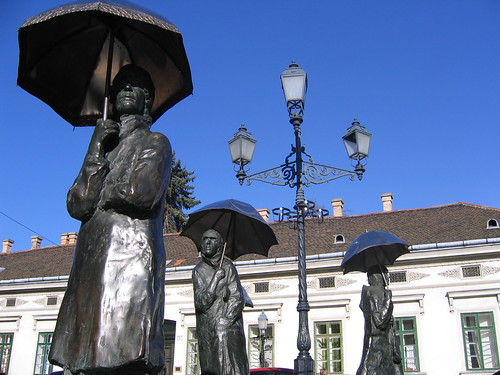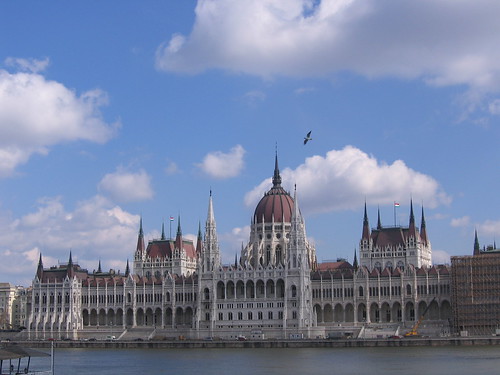As promised, I return to regale you more with tales of how positively amazing I found Budapest to be. I've talked to people that have loved it and people that have hated it; obviously, I am one among the former. We spent a good amount of time in both halves of the city - it's actually two cities joined together: Buda (the quiet one) and Pest (the wild one) - and there wasn't one place we went to that didn't completely fascinate and delight me. Okay, one place - the underground around Nyugati train station was your typical seedy city scene, so I felt fairly ambivalent about that.
When we first arrived in the city, I was prepared to feel on guard in the same way that I have in, say, Warsaw (which apparently boasts neo-Nazis so plentiful that their football team is often not welcome to play with the other European teams) and Moscow (enough said). However, Budapest was an incredibly friendly and optimistic city. They had the same war-torn buildings and frost-broken sidewalks as many other cities, but the people themselves behaved as if they were living in a metropolitan Eden. They had such pride in their city and their history, and they exhibited it in a way that I've not seen anywhere else. For instance:
There was a lovely sculpture (an art form that is in abundance in the streets of Budapest, by the way) of Imre Nagy, leader of several uprisings in the 1950s who was eventually killed by the Soviet regime. The sculpture itself is sort of haunting and serene, standing in the street the way it does:
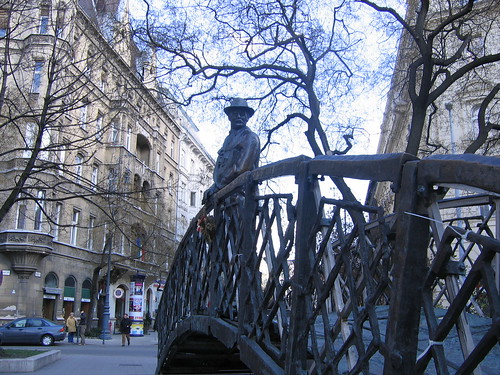
but what was most compelling about this figure was the fact that every night, a small crowd would convene around it with lit candles and flags and song. Being the skeptic that I am, when we first stumbled across this vigil, I thought it best to steer clear, in case there was a riot on the way. However, as we discovered that it was a nightly ritual, it became clear that they are simply still honoring the spirit of independence that Hungarians so pride themselves on. Not far from the Imre Nagy statue was this, a sight that would alarm and enrage most Americans:
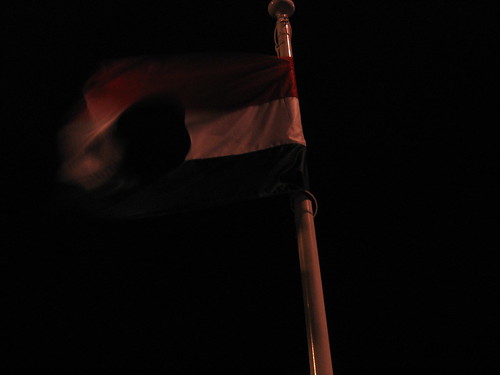
Yes, it's the Hungarian flag with an enormous hole cut in it. This flagpole is directly in front of the amazingly beautiful Parliament building (see the last post for that one), and it has an explanation in bronze in front of it. In 1956, the Hungarians put up a stubborn and vicious fight, trying to drive the Soviets out, but the uprising was brutally put down. Of course, that didn't happen until the Hungarians had sawed Stalin off at the ankles (or a bronze likeness of him, at least) and cut the Soviet emblem out of the middle of their flag. The flag (and the dismembered feet of Stalin) are both on display in Budapest, as a little reminder that they still relish their independence.
There is a park not far outside of Budapest where they've collected some larger-than-life old Soviet monuments, erected generally by the Russians. While I don't want to glorify the Soviet past, some of the monuments were amazing.

That one I like because of the added surreal thing in the background. What is that? A water tower? It's a nice juxtaposition of history and...well, I don't know. As far as I know, that "water tower" has been there for decades.
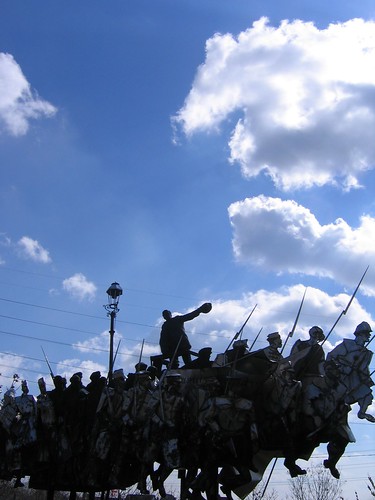
And that one I like because, simply, it's awesome art. I'm actually not sure who the artist is, but I suspect it was done by the sculptor and painter Imre Varga, who was sometimes Soviet and sometimes not. If it was truly him, this must have been during his Soviet times. We visited the Varga museum, actually, and it was mesmerizing. Despite the fact that we were followed around by the attendants (we were the only ones there, strangely), I was rapt the whole time.
But aside from the marks of 20th century history throughout Budapest, remnants of several centuries were all throughout the city. There was, of course, the epic St. Stephens Basilica, several beautiful small chapels, some imposing and ethereal synagogues, the Danube, a castle, a citadel, some Roman ruins casually scattered throughout metro stations on the Buda side of the river (and not too covered in graffiti) and delicate, intricate turn-of-the-century moldings hidden on the roofs of buildings all through the city. In short, I loved it. Highly recommended.
The near future looks a little slim on extra-Berlin adventures, but I'm sure I'll be able to find adventure within Berlin, as the weather is getting a little nicer. I suppose spring is coming, but I sense that mostly from the blooming flowers and not so much from my sniffles and rain-soaked socks. These continental weather patterns leave me sweating in the rain and shivering in the sun. Or, in the words of Imre Varga:
